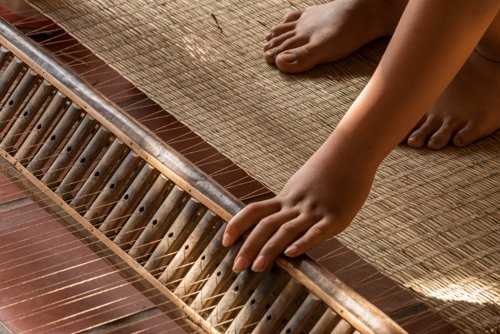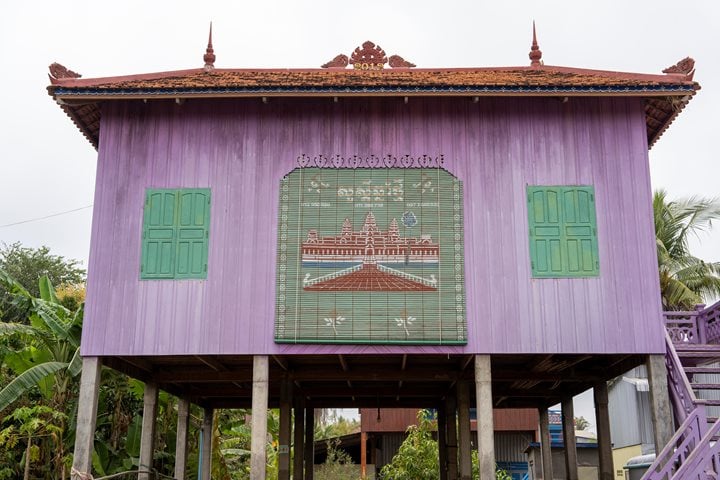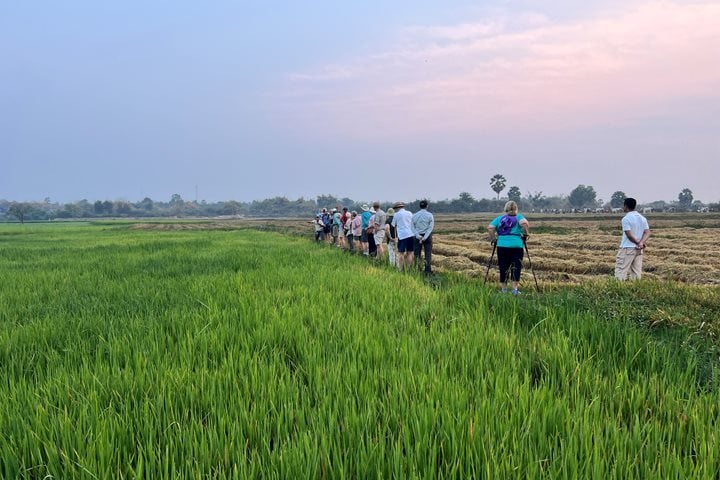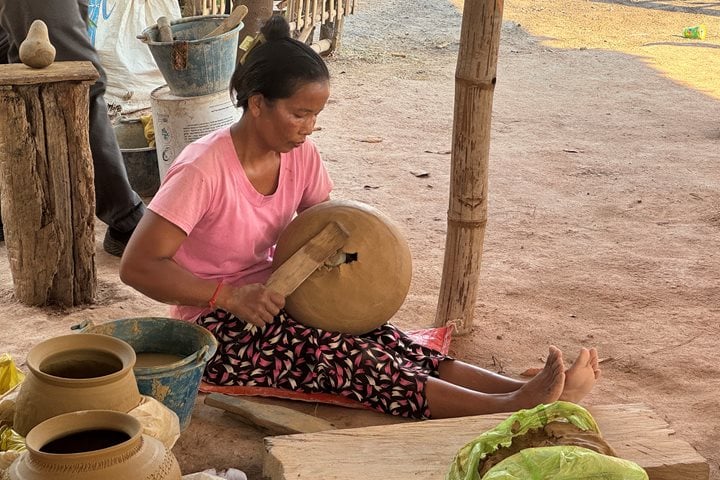Our 8:00 a.m. morning excursion quickly takes us by covered sampan boats to Binh Thanh Island, one of the many islands in the Mekong Delta. We can see the erosion of the embankments caused by daily tides and the flooding, which occurs more irregularly now than between September and November. The way to the island takes us past small scale fish farms. The tilapia must have just been fed as moving reddish shapes can still be noticed. Just as we near the island, the local ferry carrying passengers and motorbikes casts off.
Binh Thanh Island, roughly 10 x 6 km, is home to over 20,000 residents. Today is the last day before Tet, the traditional lunar New Year’s festival celebrated in Vietnam. The colour yellow, representing gold and prosperity, can be seen everywhere, from the yellow apricot flowers to the ubiquitous potted yellow chrysanthemums marking house entrances and the cumquat trees bearing fruit. To get ready for the New Year, the Year of the Fire Rooster, people are busy cleaning their houses, painting, and even getting last minute haircuts. House altars are stacked with fruit and colourful wrapped gift baskets.
The main industry of this island is the making of fine grass mats, made by hand in the traditional fashion. Today only a few people seem to work. Usually two people work together, one feeding the strands of grass one by one, while the other person, squatting at the end of a long loom low to the ground, presses them in place with a quick pull of a wooden bar.
At the community temple dedicated to the local guardian spirit, we were received by two volunteers, local elders Auntie three and Uncle six, who spoke about their life on the island and how they were personally affected by the war in the 1960s and 1970s.
The Mekong delta, which was relatively recently settled by Vietnamese and Chinese, is very much multi-cultural and includes Buddhism, Hoa Hao and Cao Dai religions. The Hoa Hao religion, officially founded in 1939, worships Buddha, ancestral spirits and heroes of the country, with 1.5 million followers, who live in harmony and practice kindness. Cao Dai established in 1929 in Southern Vietnam is a fusion of Buddhism, Daoism and Confucianism with 3 million followers.
In the afternoon our small, wooden sampans cruised toward the commercial center of Cai Be, well known for its floating market of all kinds of fruits and vegetables available for wholesale, but today all is calm and no transactions are taking place. The view of the Roman Catholic Church is partly blocked by the construction of a bridge scheduled to be finished in the next couple of months. We disembarked to visit a family-owned and operated rice paper, popped rice and coconut candy-making factory.
At sunset, Jahan leisurely cruised towards our final destination, the city of My Tho. At cocktail hour, we were able to express our thanks and appreciation to the entire Jahan crew, joined in a Cambodian dance party on deck and enjoyed a final beautiful dinner followed by a slideshow presentation I put together, using well over two hundred photographs submitted by our enthusiastic guests taken during our expedition.







